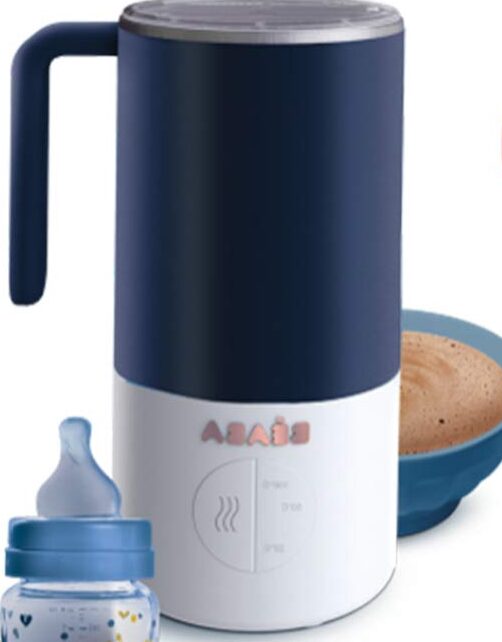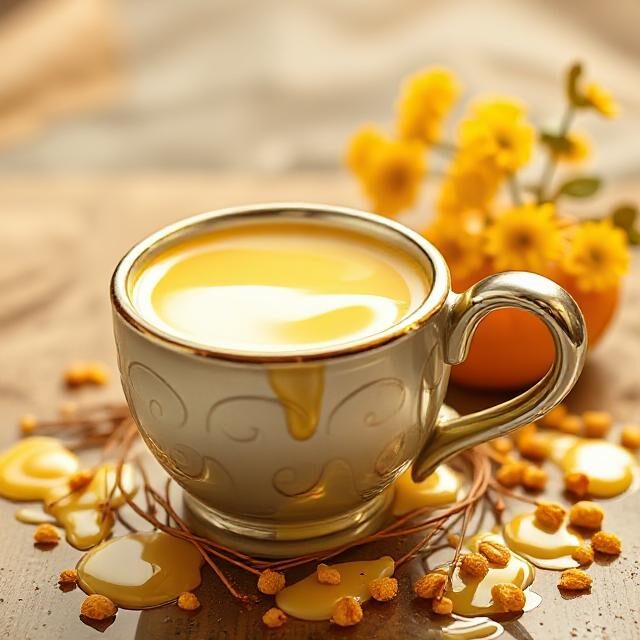
Discover the Ancient Secret: How Turmeric Golden Milk Can Transform Your Joint Health Naturally
In today’s search for natural healing, age-old remedies are stepping back into the spotlight—none more vibrant or promising than turmeric golden milk. This ancient, golden-hued drink isn’t just comforting to sip—it’s a powerhouse of wellness, especially when it comes to relieving joint pain. If you’re weary of popping pills and chasing temporary fixes, it might be time to explore a time-tested, holistic solution. In this guide, we’ll uncover the science behind golden milk, how it eases joint discomfort, and how you can easily weave it into your daily routine to support mobility and vitality.
Why Joint Pain is More Common Than You Think
Joint pain impacts millions of people worldwide, often stemming from chronic conditions like osteoarthritis and rheumatoid arthritis. While conventional medications offer relief, they often carry unwanted side effects and long-term risks. That’s where turmeric golden milk enters the picture—a warming Ayurvedic drink rich in natural compounds that combat inflammation and oxidative stress, without the baggage of pharmaceuticals. Let’s unpack what makes this soothing elixir a smart, safe option for joint care.
The Hero Ingredient: Turmeric & Its Star Compound, Curcumin
Golden milk’s healing powers begin with turmeric (Curcuma longa), a striking yellow spice treasured in both the kitchen and traditional medicine cabinets. The true star here is curcumin, the active compound responsible for turmeric’s anti-inflammatory punch and bright color. Curcumin is a polyphenol—a natural plant chemical—that’s been widely studied for its potential to relieve chronic inflammation and pain, particularly in the joints.
Curcumin’s Anti-Inflammatory Superpowers
Inflammation is the body’s natural defense, but when it becomes chronic, it wreaks havoc—especially on joints. Curcumin helps tame this chaos by blocking inflammatory molecules like NF-κB, which is a key player in many inflammatory diseases. Through this mechanism, curcumin can ease swelling, reduce stiffness, and improve joint flexibility.
Scientific evidence backs this up. Some studies have shown curcumin’s pain-relieving abilities rival that of NSAIDs—common anti-inflammatory medications—but without the gastrointestinal side effects. One meta-analysis even concluded that curcumin supplementation significantly improved pain and function in people with knee osteoarthritis.
Antioxidant Benefits: Curcumin vs. Free Radicals
Joint pain doesn’t just come from inflammation—it also stems from oxidative stress, a condition where damaging free radicals overwhelm the body’s defenses. Curcumin steps in like a molecular shield. Its structure allows it to neutralize these unstable molecules directly, while also stimulating your body’s own antioxidant systems. The result? Less cellular damage, improved joint health, and a stronger line of defense against aging-related wear and tear.
The Magic of the Mix: What Makes Golden Milk So Effective?
Golden milk isn’t just turmeric in a cup—it’s a carefully crafted blend of synergistic ingredients that enhance each other’s healing powers. Let’s look at what makes this golden blend so potent:
- Black Pepper: Contains piperine, a compound that boosts curcumin absorption by up to 2000%. Without it, your body might miss out on turmeric’s full benefits.
- Ginger: Another inflammation-fighter, ginger adds both flavor and function. Its active components, gingerols, have shown pain-reducing effects similar to ibuprofen in some studies.
- Cinnamon: Offers a sweet kick and contributes additional anti-inflammatory and antioxidant properties, especially helpful for easing stiffness.
- Healthy Fats: Whether it’s coconut oil or almond milk, a fat source is essential because curcumin is fat-soluble—it needs fat to be absorbed effectively by your body.
Together, these ingredients work in harmony, creating a delicious and therapeutic drink that supports joint function and overall wellness.
What the Science Says About Golden Milk for Joint Pain
While most research focuses on isolated curcumin, new studies are beginning to explore how combinations like golden milk perform. The results are encouraging: the layered effects of turmeric, ginger, and cinnamon reduce systemic inflammation—often the root cause of chronic joint pain.
In rheumatoid arthritis studies, curcumin has shown potential in decreasing morning stiffness and joint swelling. For osteoarthritis, its antioxidant and cartilage-protecting effects help slow degeneration and relieve discomfort. In short, golden milk doesn’t just mask the symptoms—it targets the source.
.

How to Make Golden Milk at Home
Golden milk is simple to prepare, and making it yourself ensures you get the highest-quality ingredients. Here’s a straightforward recipe to start with:
Ingredients:
- 1 cup (240 ml) of milk (dairy or plant-based: almond, coconut, oat)
- 1 tsp turmeric powder
- ½ tsp ground ginger (or fresh, grated)
- ¼ tsp ground cinnamon
- A pinch of black pepper
- Optional: ½ tsp coconut oil, 1 tsp honey or maple syrup
Instructions:
- Combine all ingredients in a small saucepan.
- Heat over medium, whisking constantly, until warm and frothy (don’t boil).
- Remove from heat, strain if using fresh ginger, and pour into your favorite mug.
- Sip slowly and enjoy—ideally before bed for a calming effect.
Tips for Maximum Benefits
- Drink it daily: Consistency matters—regular intake delivers the best results.
- Choose organic spices: Quality matters when it comes to potency.
- Adjust to taste: Customize the spice levels to your liking.
- Mix up your milk: Try different milks to discover new flavors and textures.
Easy Ways to Add Golden Milk Into Your Day
- Morning Energizer: Swap your coffee for golden milk and start your day grounded and inflammation-free.
- Afternoon Reboot: A midday mug offers a gentle energy boost and mental clarity.
- Bedtime Soother: Its warm, spicy flavor is perfect for winding down before sleep.
- Smoothie Upgrade: Add turmeric, black pepper, and cinnamon to your morning smoothie.
- Cooking Secret: Use golden milk as a base for soups or sauces for added nutrition.
A Few Precautions to Keep in Mind
Golden milk is safe for most people, but here are a few considerations:
- Stomach sensitivity: Large doses of turmeric can cause nausea or diarrhea.
- Blood thinners: Curcumin may interact with anticoagulant medications.
- Gallbladder issues: Turmeric may not be suitable if you have gallstones.
- Medication interactions: Speak with your doctor if you’re taking prescriptions.
- Pregnancy/Breastfeeding: Check with your healthcare provider before adding large amounts of turmeric to your diet.
Always consult your healthcare provider if you’re unsure whether golden milk is right for you.
More Than Joint Relief: Other Health Benefits
Golden milk’s impact extends well beyond joint pain. Its ingredients support a range of wellness benefits, including:
- Digestive ease: Turmeric stimulates bile production, improving digestion.
- Immune defense: Anti-inflammatory compounds help your body ward off illness.
- Brain support: Curcumin may enhance brain function and reduce the risk of cognitive decline.
- Heart health: By improving blood vessel function and reducing inflammation, golden milk supports cardiovascular well-being.
- Better sleep: The warm, soothing nature of the drink promotes relaxation and more restful sleep.
Final Thoughts: Your Golden Path to Wellness
Turmeric golden milk isn’t just a trendy drink—it’s a time-honored remedy backed by modern science. With powerful anti-inflammatory and antioxidant properties, it offers a natural, gentle, and flavorful way to manage joint pain and improve your overall health.
Whether you’re battling arthritis, recovering from inflammation, or simply looking to add a soothing wellness ritual to your day, golden milk is a golden opportunity. Sip mindfully, stay consistent, and embrace the journey to a healthier, more vibrant life—one warm cup at a time.
References
[1] Aggarwal, B. B., & Harikumar, K. B. (2009). Potential therapeutic effects of curcumin, the anti-inflammatory agent, against neurodegenerative, cardiovascular, pulmonary, metabolic, autoimmune and neoplastic diseases. International Journal of Biochemistry and Molecular Biology, 1(1), 1-15. https://www.ncbi.nlm.nih.gov/pmc/articles/PMC2637808/
[2] Wang, Z., Jones, G., & Winzenberg, T. (2021). Curcumin for osteoarthritis: A systematic review and meta-analysis of randomized controlled trials. BMC Complementary Medicine and Therapies, 21(1), 1-12. https://bmccomplementmedtherapies.biomedcentral.com/articles/10.1186/s12906-021-03261-y
[3] Daily, J. W., Yang, M., & Liu, X. (2016). Efficacy of turmeric extracts and curcumin for alleviating the symptoms of knee osteoarthritis: A systematic review and meta-analysis of randomized clinical trials. Journal of Medicinal Food, 19(12), 1109-1118. https://pmc.ncbi.nlm.nih.gov/articles/PMC5003001/
[4] Prasad, S., & Aggarwal, B. B. (2011). Turmeric, the Golden Spice: From Traditional Medicine to Modern Medicine. In Herbal Medicine: Biomolecular and Clinical Aspects. 2nd edition. CRC Press/Taylor & Francis. https://www.ncbi.nlm.nih.gov/books/NBK92752/
[5] Shoba, G., Joy, D., Joseph, T., Majeed, M., Rajendran, R., & Srinivas, P. S. S. R. (1998). Influence of piperine on the pharmacokinetics of curcumin in animals and human volunteers. Planta Medica, 64(4), 353-356. https://www.thieme-connect.de/products/ejournals/abstract/10.1055/s-2006-957450
[6] Mashhadi, N. S., Ghiasvand, R., Askari, G., Hariri, M., Darvishi, L., & Mofid, M. R. (2013). Influence of ginger and cinnamon intake on inflammation and muscle soreness in exercise-trained women. International Journal of Preventive Medicine, 4(Suppl 1), S11-S15. https://www.ncbi.nlm.nih.gov/pmc/articles/PMC3665023/
[7] Kawatra, P., & Rajagopalan, R. (2015). Cinnamon: A Multifaceted Medicinal Plant. Pharmacognosy Reviews, 9(18), 121-128. https://www.ncbi.nlm.nih.gov/pmc/articles/PMC4003790/
[8] Jamwal, R. (2015). Bioactive Molecules from Turmeric in the Prevention and Treatment of Chronic Diseases. Journal of Medicinal Food, 18(11), 1189-1196. https://www.ncbi.nlm.nih.gov/pmc/articles/PMC4661044/
[9] Lopresti, A. L., Maes, M., Maker, G. L., Hood, S. D., & Drummond, P. D. (2014). Curcumin for the treatment of major depression: A randomised, double-blind, placebo controlled study. Journal of Affective Disorders, 167, 368-376. https://pubmed.ncbi.nlm.nih.gov/25046624/
[10] Wongcharoen, W., & Phrommintikul, S. (2009). The protective effect of curcumin on cardiovascular diseases. Journal of Cardiovascular Pharmacology, 53(3), 195-203. https://pubmed.ncbi.nlm.nih.gov/19247193/
